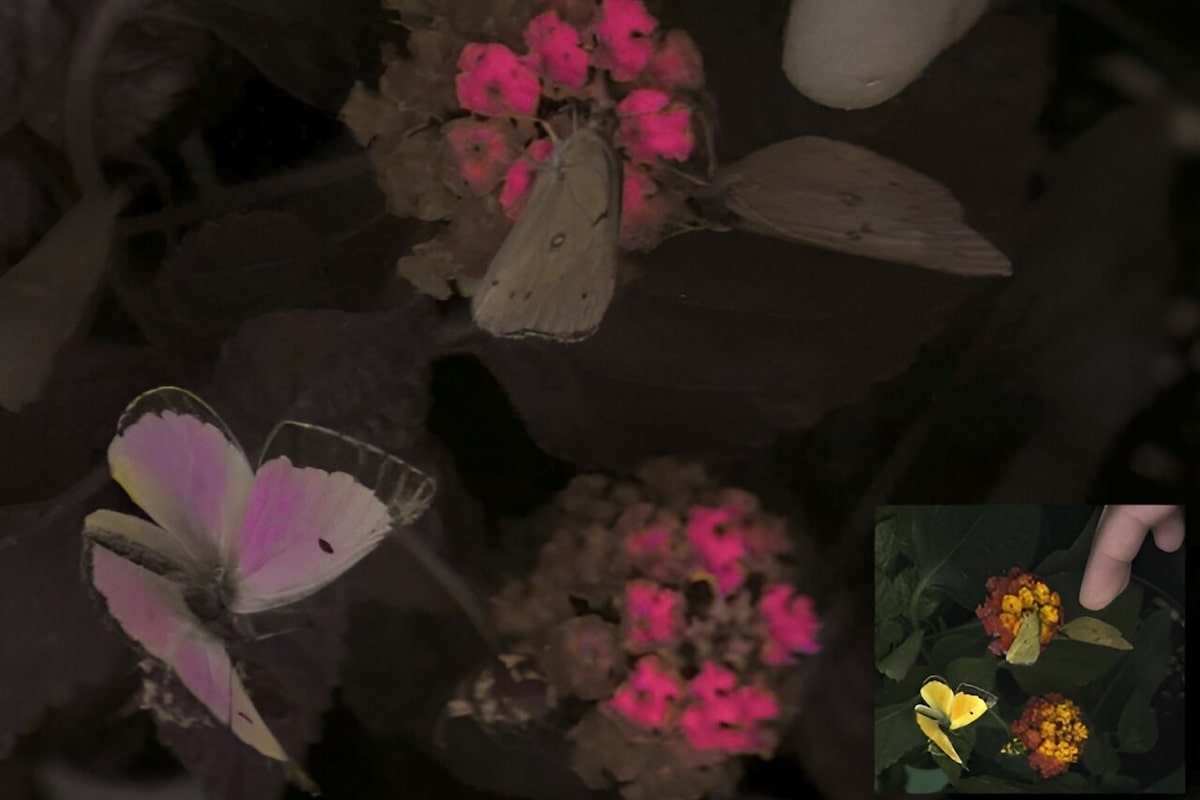George Mason University scientists and collaborators unveil a new camera system and software package that allows both researchers and filmmakers to capture and display animal-view videos.Daniel Hanley/George Mason University
What would it be like to see the world through the eyes of a bird, a dog or an insect?
An international team of researchers has taken a step toward providing the answer by building a video camera system that captures how various animals perceive colour and displays it in a way that can be experienced by human viewers.
The results can reveal hidden cues that guide animals with very different vision systems from our own, showing not only what they can see but what they are likely to be to paying attention to, the researchers said.
A description of the camera systems with examples of its performance were published last week in the PLOS Biology journal.
“We can accurately record colours in motion. That’s something we weren’t able to do before,” said Daniel Hanley, a sensory ecologist at George Mason University in Fairfax, Va., who co-led the effort.
He said the idea for the camera originated more than a decade ago when he was a postdoctoral researcher at the University of Guelph in Ontario, working with Peter Kevan, now professor emeritus and a specialist in the biology of bees and other pollinators.
Dr. Kevan’s earlier work on bee vision had included building up a repository of photographs of flowers taken through different colour filters. These could be digitally scanned and combined to help bring out patterns that are not apparent to human eyes. But such an approach leaves out the subtle changes that occur when objects are viewed at different angles and lighting conditions.
In conversation with Dr. Kevan and others, Dr. Hanley began to imagine a camera that could see the second-to-second changes in a scene in the way a bee, a bird or another type of animal would see it, in order to address a range of behavioural and evolutionary questions.
A key challenge is that bees can see in ultraviolet, but not in the red part of the colour spectrum. The way Dr. Hanley and his colleagues solved the problem was by creating a camera system with a beam splitter – a partially reflecting optical component that can separate ultraviolet light from the visual part of a scene and send it to a separate detector. Then the ultraviolet information is reintegrated into the display by assigning it a colour that the human eye can detect.
“It’s a relatively simple solution on paper that took many years countless hours to actually put into practice,” he said.
Like humans, bees are trichromats, which means they have three different visual receptors in their eyes that correspond to three primary colours. In the human retina, the receptors are sensitive to red, green and blue. All the other colours humans see are based on combinations of responses by those three receptor types.
In contrast, bees’ receptors respond to green, blue and ultraviolet light. To show this, the camera system shifts the bee spectrum into the human range so that ultraviolet becomes blue, blue becomes green and green becomes red. This renders all the colours a bees can see visible to a human, while preserving the relationships between contrasting colours of different wavelengths.
A tougher challenge for the system is recreating the visual experience of birds, many of which see with four primary colours: three in visible light plus ultraviolet. Dr. Hanley said the system attempts to get at this by translating all four colours into the human visual range – an effect that turns the sky brilliant magenta.
But one thing the system can’t do is give human eyes the additional combinations that birds experience with four distinct colour receptors.
“There are millions of additional colours that are added that we couldn’t even imagine,” he said.
Jolyon Troscianko, a visual ecologist at the University of Exeter in Britain who was not involved in the study, said that there are more precise ways of measuring and representing the wavelengths of light that animals can see.
But he said the system that Dr. Hanley and others have devised is important because it is inexpensive and portable enough to take into the field to study scenarios where insects, birds and other animals must make decisions based on colour – including how and when to signal each other without revealing themselves to potential predators.
“The thing they’ve done is to make the system as accessible as possible to anyone who needs these abilities in their work,” he said.
Dr. Hanley said the camera system could be useful for addressing a wide range of scientific and practical questions, including how to produce transparent films for windows that are more effective at deterring birds from flying into them, or using animal vision to make it easier to spot agricultural pests on crops.
Dr. Kevan said he was amazed to see what is now possible with digital imaging systems compared with the black and white photographs he once worked with.
“I think these new approaches are very exciting and giving us all sorts of new insights,” he said.
